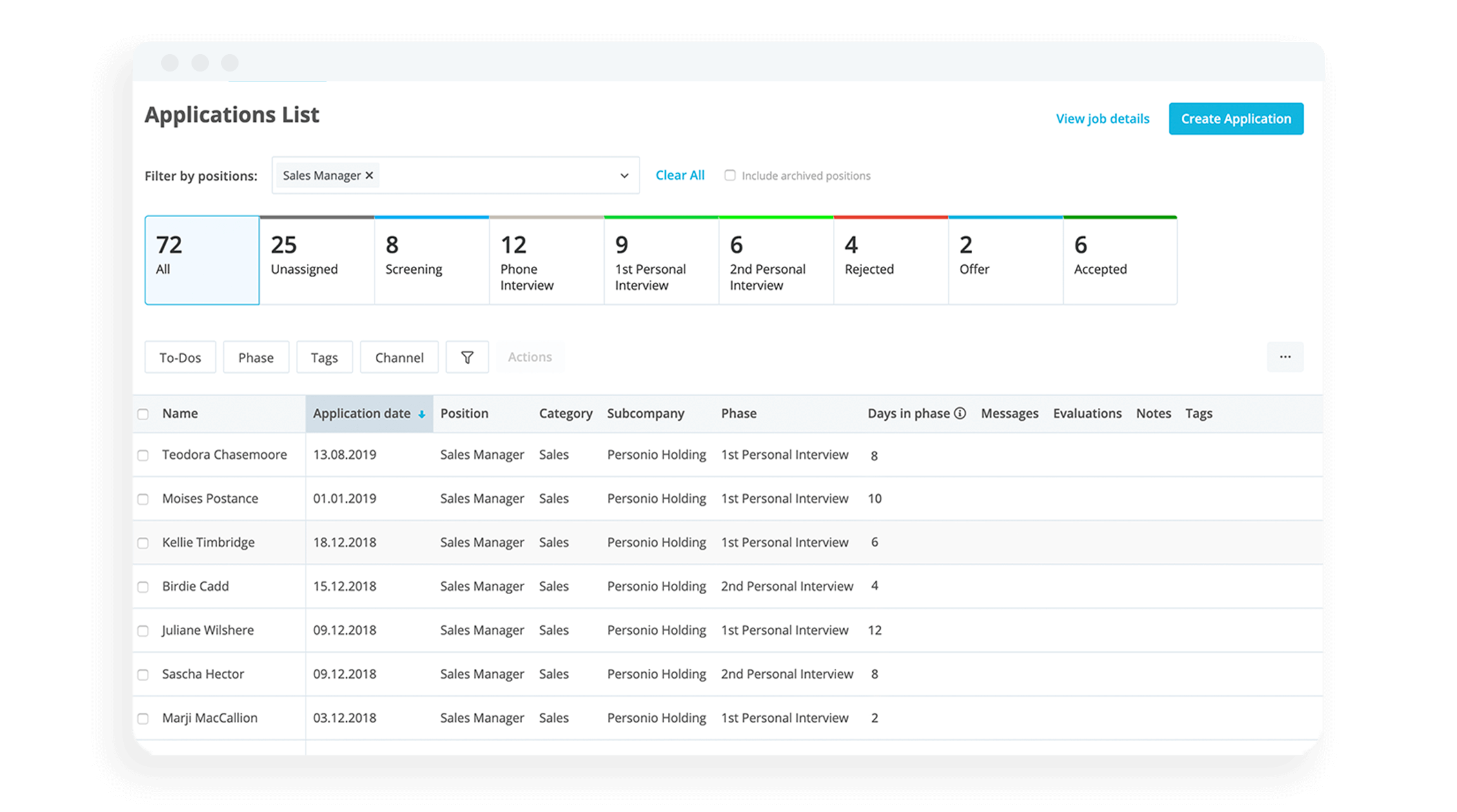How to Create a Successful Recruitment Strategy in HRM

All HR departments need a recruitment strategy. One that brings top-tier talent to every part of your business. In this article, you’ll learn about various recruitment strategies, the core elements of each and how to create a strategy that’s optimal for your organisation.
Key Facts
A recruitment strategy is an outline for how you find new candidates for open positions throughout your company and narrow down your choice until you find the best employee.
It’s important to fully understand the position you’re recruiting for so you can more accurately identify the right skills and traits in your candidates.
Tools like SMART goals can help you set definite goals for finding employees in order to help recruiters locate the most qualified candidates.
What Is a Recruitment Strategy?
A recruitment strategy is a clear plan to find new talent for vacant positions within your company. This plan should be as comprehensive as possible and include important prerequisites for the position you’re trying to fill, such as education, skills and experience. It’s also important that your strategy is written clearly and concisely so that it’s easily understood by anyone who reads it.
Core Elements of Recruiting Strategies
A successful recruiting strategy involves paying attention to certain key tenets of the strategy and ensuring they’re set up for success. We’ve listed those elements below and provided overviews to help you understand how they fit into the process.
Recruitment strategy plan. A step-by-step process for recruiting new talent must be outlined before anything. It’s not enough to put an ad on a job board; you have to understand what your company needs at that point in time and pursue employees who will further your company’s objectives.
Skillset requirements. Your recruitment strategy should consider the soft and hard skills required to succeed in the role. The more you specify the type of employee you seek, the more you narrow the recruitment pool to the best possible candidates.
A strong employer brand. Your organisation's reputation plays a critical part in attracting top talent. In today’s market, workers put the companies they work for under more and more scrutiny. As a result, how a company conducts itself, perceived values and reviews from other employees influence a candidate’s decision to apply to, or accept, a position. For this reason, staying in the public’s good graces are often included within the overall recruitment process.
Distribution channels. Once you’ve decided on the ideal employee you’re looking for, it’s time to decide where you’ll look for them. Several options are available to help you find the right people for the job.
For many organisations, the internet is the most effective way to reach candidates. Specialty job boards, such as ones dedicated to industry sectors, go even further to reach desirable candidates.
You can also work closely with affinity groups to reach out and recruit more candidates; this could involve advertising your job with a women’s professional organisation, for example. More traditional methods are also still effective. You may opt to work with a recruiter or advertise within your company to hire or promote internally. You may want to consider a referral programme in which current employees can refer friends and family, sometimes in exchange for a bonus.
Flexibility and adaptation. Arguably, the most important aspect of any recruitment strategy is the ability to deviate from them when necessary. It’s difficult to predict the opportunities your recruiters might find, and allowing them to explore them might lead to greater benefits for the company. Additionally, you should monitor the job market and how it shifts to understand how your recruitment strategy will need to adapt. Every new wave of workers will want slightly different things, and being able to meet those desires is what keeps company positions full.
Turn Top Talent Into Your Next Great Hire

Speed up your entire recruiting and hiring process with Personio. See how it works below.
Hiring At Scale With PersonioHow To Use SMART Goals To Set Up a Recruitment Strategy
The use of SMART Objectives is a method of goal creation that helps ensure that a team or organisation can achieve what they want within a certain time frame. This approach to making objectives can help your recruitment plans by clearly defining what you seek and the steps you need to take to get there. It does this by breaking down a broader goal and determining key details to define it by using the SMART acronym.
S Stands For Specific. This clearly defines what needs to be accomplished, who’s accomplishing it and how they’re doing it. A specific hiring goal may detail who is performing the work and how precisely the organisation will go about hiring. For example, a specific goal may be to hire two people who each have two years’ experience and a Bachelor’s degree to fill two Account Manager vacancies in the marketing department.
M Stands For Measurable. This quantifies what success looks like to help you keep track of your progress. In a recruitment strategy, you’d specify how many new employees you’d like to apply, which percentage were qualified, and how long it took to hire someone from beginning to end, for example.
A Stands For Achievable. This sets realistic expectations for what the organisation can actually achieve with its resources. A recruiter could want to fill five empty positions within the company, but they may not be able to do so without the assistance of a recruiting firm, additional time or more help from other employees. Assessing the achievability of the goal helps scope what the team needs to get there.
R Stands For Relevant. This determines why you are setting this goal in the first place and how it benefits the company long term. It’s fairly obvious that a company needs employees to function, but a hiring manager may need to justify the hiring to upper management. Knowing how much the company can benefit from a top-quality employee could help ensure that a hiring manager has the support they need to fill this important position.
T Stands For Time-bound. This establishes a timeline for when you expect the goal to be complete. This helps whoever’s responsible for the task to set deadlines for themselves and for others involved in the process. It also ensures that the hiring process isn’t dragged out.
Recruitment Strategy Implementation Example
If you were running a growing tech company and wanted to find someone to fill a new position, you and your recruiters would perform the following steps for the best results.
Attract New Candidates Based on Company Needs and Reputation. It’s important to thoroughly understand the skills, education and experience someone would need to excel in the position. Additionally, your reputation and values must match the candidates to ensure they stay within that position long term.
Advertise Jobs via the Right Distribution Channels. Advertise the position in channels that would attract someone interested in a career in technology. Online job postings are likely the best option, but you may want to explore tech-specific job boards or tech communities. You can also source talent directly from your employees, who may have friends or colleagues interested in a new position.
Evaluate Candidates. Implement a screening process that identifies the most qualified candidates from the resumes that you receive. That way, you maximise your chances of finding someone who fits the company without wasting resources on a drawn-out selection process.
Narrow Down to the Final Few. Interview all candidates that make it through the preliminary screening process so that only the top candidates are left on your list. Typically, this part of the hiring process determines if the candidate's values and temperament fit the company’s. Additionally, it helps you get more context about the information they provide on their resumes.
After Hiring, Evaluate the Strategy and Adapt for Future Recruitment Efforts. Take the time after hiring to pinpoint what worked and what didn’t work in your recruitment strategy. Take steps to resolve anything that didn’t go right. Also, job markets tend to change over time, which could make your recruitment strategy less effective in the future. So even if you didn’t identify any room for improvement, don’t let your plan stagnate. Periodically evaluate and make any necessary adjustments to keep it as effective as possible.
One Place for All Your Interview Feedback

Hire at scale with easily documented and trackable interview feedback. Learn more now.
Hiring At Scale With Personio
Frequently Asked Questions About Recruitment Strategy
What Is a Recruitment Strategy?
A recruitment strategy is a company’s plan to find new talent for open positions while considering the skills and values a candidate needs to excel within the position.
What Are the Core Elements of a Recruitment Strategy?
The core elements of a recruitment strategy are:
Having a clear, step-by-step plan to find new talent
Understanding the skills required to succeed within the role
Cultivating a strong brand reputation in the public eye
Knowing which recruitment channels to use to find employees that fit the organisation
Being flexible with your recruitment strategy and ready to change it as the job market shifts
How Do You Implement a Recruitment Strategy?
Understand the prerequisites of the open position and use tools like SMART goals to define the type of employee you’re looking for, how you’ll look for them and the resources available to accomplish that.
Track and Manage Recruitment Efforts with Personio
You’ll need a helping hand to manage your recruitment strategy. Personio’s applicant tracking software simplifies and streamlines the process from A to Z, introducing helpful automations, workflows and collaboration that keep the process moving. Our platform serves as a dashboard for all applications and includes tools to help you evaluate candidates faster. Create offers to top-notch candidates in a click; speak with an expert today to learn how.
Disclaimer
We would like to inform you that the contents of our website (including any legal contributions) are for non-binding informational purposes only and does not in any way constitute legal advice. The content of this information cannot and is not intended to replace individual and binding legal advice from e.g. a lawyer that addresses your specific situation. In this respect, all information provided is without guarantee of correctness, completeness and up-to-dateness.

